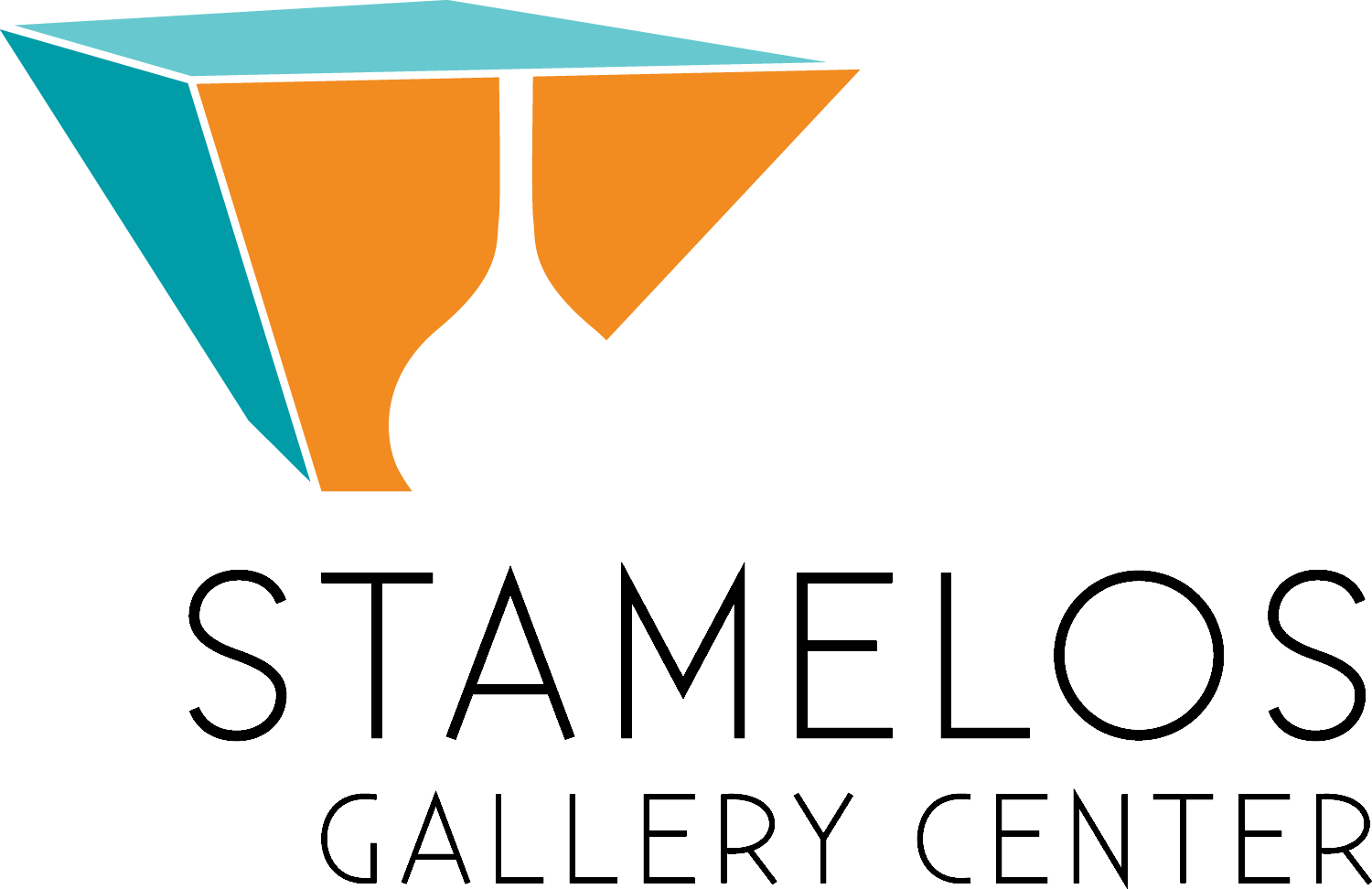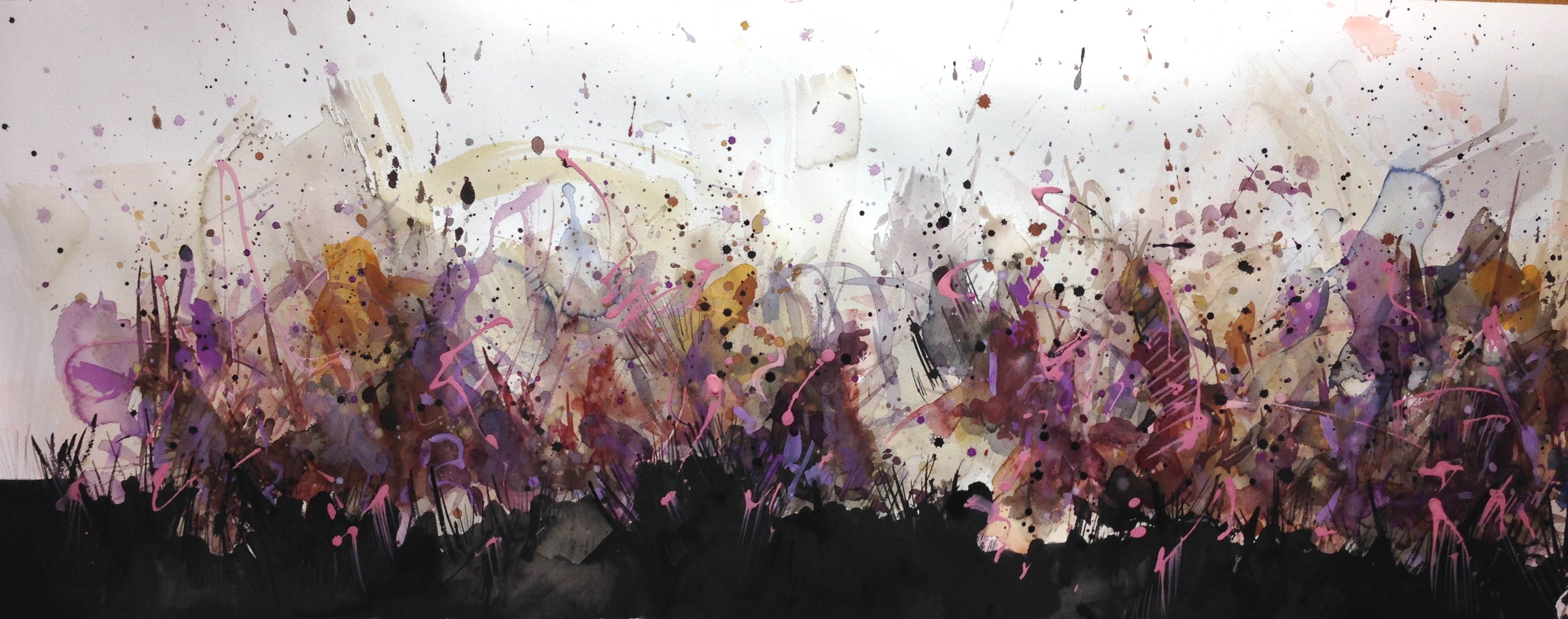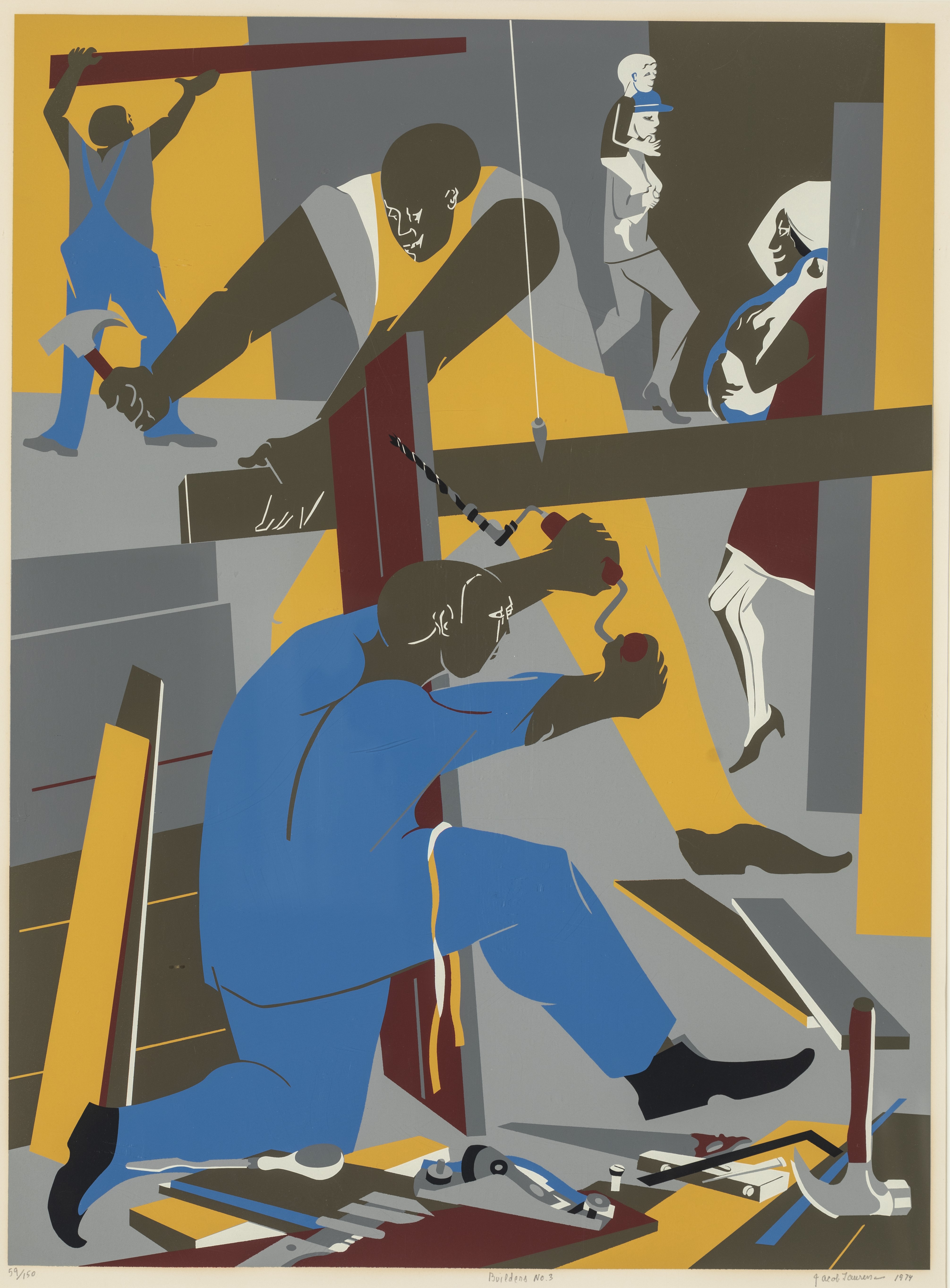
Rocco Pisto earned a Bachelor's Degree in Fine Arts from Eastern Michigan University in 1974. He is the current President of the Michigan Watercolor Society. Rocco has been a painter for over four decades.
The remarkable collection of work presented in this show will range from abstract, mixed media watercolor paintings to somewhat impressionistic landscapes. The exhibited paintings will vary in size from 15"x13" to eight feet long. The artist experiments with the flow of his brush strokes, following the direction of the drying process as the piece evolves into multiple layers of imagination and design.
Watercolor seems to me to be a bit of a dying art form in current mainstream painting circles, and in academic notions of respectable art. I have always felt, however, it is a medium that can compete with any other painting technique in creating exciting, powerful and dramatic artistic statements. This solo exhibition, including over forty watercolor and mixed media paintings, will illustrate many unique properties of transparent watercolor and design concepts that can only work with this medium.
As a painter for over forty years, I never tire of the experimental process of starting a piece and solving the design problems along the way to make it a finished work. Spontaneity, discovery, individuality, analysis, visual balance, contrast and contradiction all summarize my thought process. I find that no two paintings are the same, and I cannot paint the same thing twice. My technique of painting abstractly by dripping, pouring, splashing and brushing paint allows the work to evolve until it meets my criteria of what constitutes a successful piece of art. The adrenaline of marking pristine, white Arches Watercolor paper with paint is a euphoric process that never loses its newness or interest. ---Rocco Pisto

Rocco's painting/drawing demonstrates ambition in scale and an experimental spirit for what various media can offer in each of their idiosyncratic characteristics. Those individual qualities collude and contrast to symphonically entice both the artist and viewer. In scale, it commands attention. I urge all artists to work in a monumental scale at least once a year regardless of your medium. It pulls your image full circle. It is an exercise in control, an amplification of your expressive vocabulary, a vehicle for challenging the power potential of your given language. Mr. Pisto here has created a song of the nuances of varied surface qualities. Those surfaces are lush, velvety and both aggressive and subtle. ---Bruce Winslow, Former Director of the Alden B. Dow Museum of Science and Art
Opening Reception
Thursday, April 26, 2018 5:00 p.m. - 7:00 p.m.
Rocco Pisto will speak at 6:00 p.m. Event is free to the public. Complimentary wine and hors d'oeuvres provided.

The Alfred Berkowitz Gallery is located on the third floor of the Mardigian Library at the University of Michigan-Dearborn. For further information, see below for contact information. Anyone requiring accommodations under the provisions of the Americans with Disabilities Act should contact (313)-593-5087.

Jacob Lawrence (1917-2000), Serigraph print, 1974
Gift of Gilbert M. Frimet,
Collection of UM-Dearborn (1980.065)
Photographed by Tim Thayer
This powerful serigraph print from the permanent collection was created by Jacob Lawrence (1917-2000), one of this century's most widely acclaimed artists.
Lawrence was born in Atlantic City, New Jersey, but moved to Harlem, New York, at 13. He is among the few painters of his generation who grew up in a Black community, received instruction primarily from Black artists, and was influenced by the experiences of Black individuals.
Lawrence's artwork portrays the lives and struggles of the Black community, capturing their experiences through several series focused on figures such as Toussaint L'Ouverture, Frederick Douglass, and Harriet Tubman, as well as themes related to life in Harlem and the civil rights movement of the 1960s. His style is characterized by vibrant colors and abstract forms.
In the 1940s, during a time of widespread segregation, Lawrence broke racial barriers by becoming the first Black artist whose work was acquired by the Museum of Modern Art in New York City.
He stated, "If at times my productions do not express the conventionally beautiful, there is always an effort to express the universal beauty of man's continuous struggle to lift his social position and to add dimension to his spiritual being."
Researched and written by:
Julianna Collins, Stamelos Gallery Center former intern, UM-Dearborn art history/museum studies graduate, Class of 2025